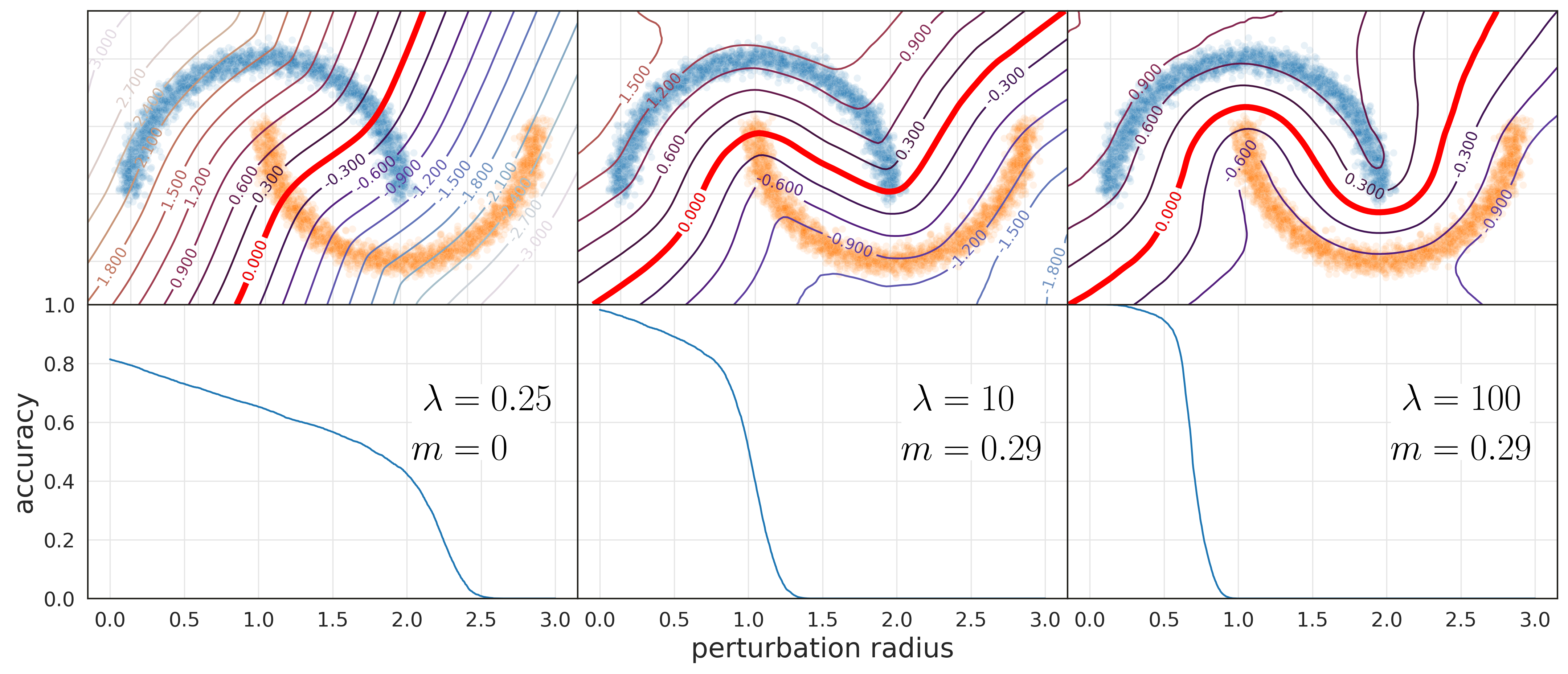Pay attention to your loss: understanding misconceptions about 1-Lipschitz neural networks
Lipschitz constrained networks have gathered considerable attention in the deep learning community, with usages ranging from Wasserstein distance estimation to the training of certifiably robust classifiers. However they remain commonly considered as less accurate, and their properties in learning are still not fully understood. In this paper we clarify the matter: when it comes to classification 1-Lipschitz neural networks enjoy several advantages over their unconstrained counterpart. First, we show that these networks are as accurate as classical ones, and can fit arbitrarily difficult boundaries. Then, relying on a robustness metric that reflects operational needs we characterize the most robust classifier: the WGAN discriminator. Next, we show that 1-Lipschitz neural networks generalize well under milder assumptions. Finally, we show that hyper-parameters of the loss are crucial for controlling the accuracy-robustness trade-off. We conclude that they exhibit appealing properties to pave the way toward provably accurate, and provably robust neural networks.
PDF Abstract

